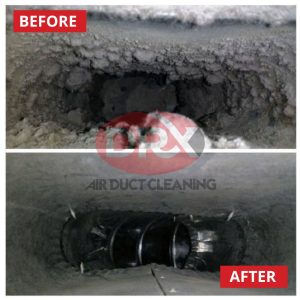Learn More About IAQ
The interior of your home or business can run into many issues along the line. Perhaps something that isn’t put in the forefront as much with routine check-ups can be indoor air quality. Yet indoor air quality is an essential thing to keep up with as it can affect the health and behavior of occupants inside. Read below to see how indoor air quality may be affecting you and see what strides can be made to improve upon it. As with anything, be sure to contact a professional if you’d like more in-depth information or recommendations more specifically made to your property.
What causes poor air quality?
Poor air can stem from a variety of reasons yet some common things that can cause it can be an accumulation of the following or stand-alone. Such things can be cigarette smoke, dust mites, mold and mildew, pet dander, household cleaning products. polyurethane, PBB, PCB, formaldehyde, and insects.

How can I improve overall air quality?
IAQ can be improved by a combination of several methods. It’s important to remember that your property has many systems, appliances, materials and even décor and furniture which can affect the air you breathe. (There are VOCs volatile organic compounds found in paints and furniture materials.) Some things that can help improve indoor air quality can start with your AC filters, ideally, these should be cleaned every 1-3 months or every month if there are smokers and pets. Another thing that can often be forgotten is to check your air ducts, the air ducts themselves are basically tunnels that deliver the warm and cold air across the property to vents. Now with humidity and dust, there can be certain things like mold and other contamination that can form inside them which can affect the overall indoor air quality. It’s safe to have your ducts checked at least every 1-3 years or as recommended by your HVAC professional.
What are the symptoms of bad air quality in the home?
Poor indoor air quality can cause some symptoms to emerge and in some cases, those who don’t have allergies or asthma can develop them with exposure over time. Some people may experience certain symptoms over others yet commonly you can experience coughing, sneezing, shortness of breath, headaches, sinus congestion, dizziness, fatigue, and dryness or irritation of the eyes, nose, skin, and throat.
How do I get the best indoor air quality?
You can choose to implement professional services or impart some DIY endeavors that can easily be incorporated into your home to improve indoor air quality. An obvious way to cut indoor air quality is to maintain a cleaner home which not only helps with hygiene but can greatly cut dust, animal dander, mold and mildew from the equation. If you’re using household products with exasperating chemicals, make sure to ventilate the area by cracking the window or opening a door. In general, letting fresh air in is a good way to circulate bad air out. You could also invest in an air purifier, just be sure to keep up with filter changes. The same can be said with filters in your greater HVAC system.
How do I disinfect the air in my house?
Disinfecting your home can be done without chemicals fairly simply. It can be as simple as letting fresh air in or keeping houseplants. Some houseplants may even pull away from certain toxins from the area as seen with spider plants which are typically placed at bedsides for fresh air. You can also clean with nontoxic chemicals that can take away from less than ideal cleaning experiences. What’s more, essential oil diffusers or beeswax candles can be a great alternative to candles that have certain ingredients that aren’t best to breathe in.
What are the 4 major indoor air pollutants?
- Asbestos
- Biological Pollutants
- Carbon Monoxide (CO)
- Formaldehyde/Pressed Wood Products
- Lead (Pb)
- Nitrogen Dioxide (NO2)
- Pesticides
- Radon (Rn)
- Indoor Particulate Matter
- Secondhand Smoke/ Environmental Tobacco Smoke
- Stoves, Heaters, Fireplaces, and Chimneys
- Volatile Organic Compounds (VOCs)
How can I check the air quality in my home?
Indoor air quality can be checked with air quality monitors which check levels of allergens, dust, humidity and chemical pollutants in the home. Natural gas detectors can also be added for gas leak detection and can detect not only carbon monoxide but other types of gas as well.
What instrument measures air quality?
Air quality can be measured by an air quality meter such as the PCE-RCM 15 which is specifically designed to monitor indoor air quality. This meter measures the parameters for humidity, formaldehyde, temperature, PM1, PM2.5, PM10 and TVOC.
What is unhealthy air quality?
An AQI stands for air quality index and can go up to a reading of 500 with 301-500 readings considered as “hazardous.” “Unhealthy” air is read as an AQI of 151-200 and the reading of 101-151 can still be considered “unhealthy but for sensitive groups.” With the “unhealthy” reading everyone can experience adverse health effects.
Contact A Professional HVAC Company For Assistance
A good way to cut poor indoor air quality from its source is to have an HVAC professional conduct air duct cleaning and change the filters too. Here are also some tips regarding air duct cleaning 101 that may prove useful to you. Improving indoor air quality is essential in maintaining the health of the occupants inside your property. Contact a professional today to learn more about what efforts an be made to improve it for the better.
